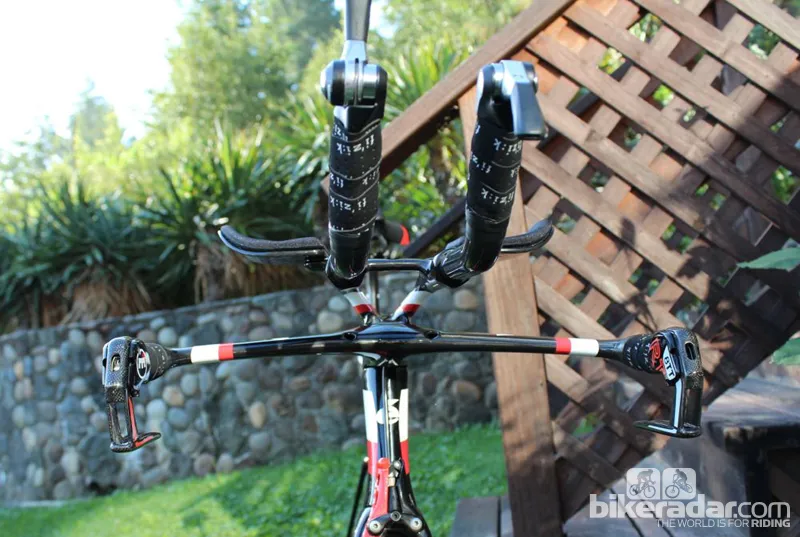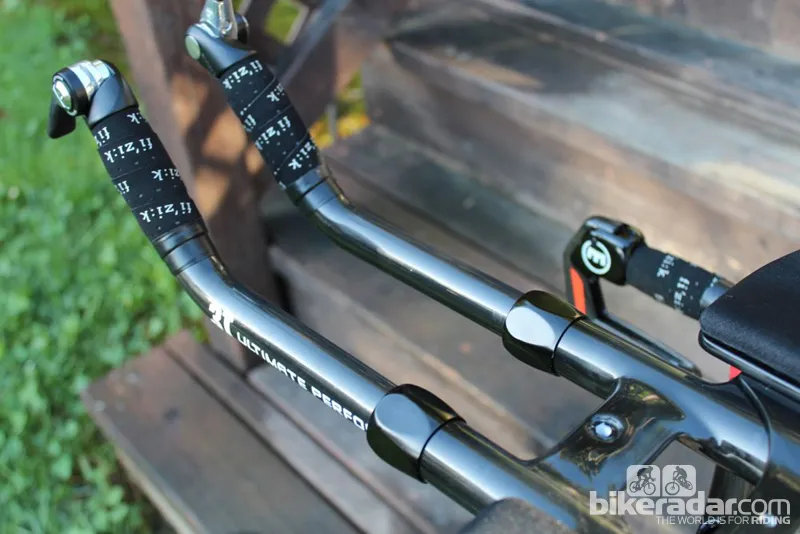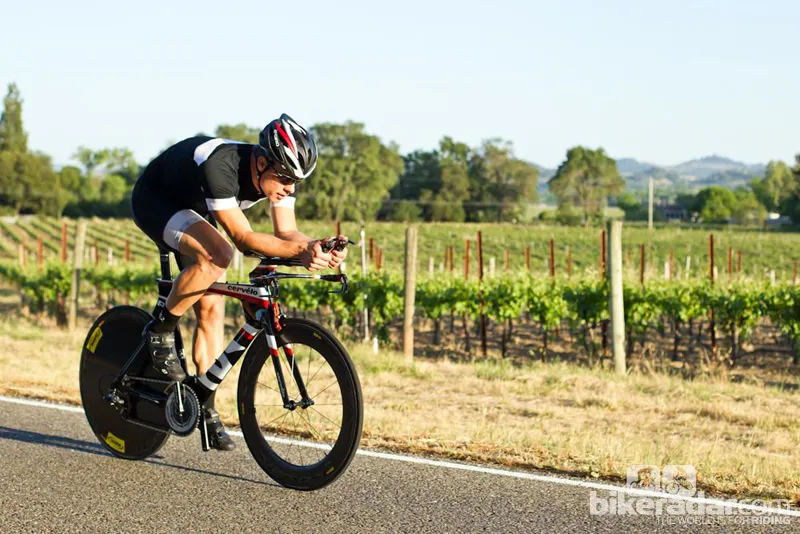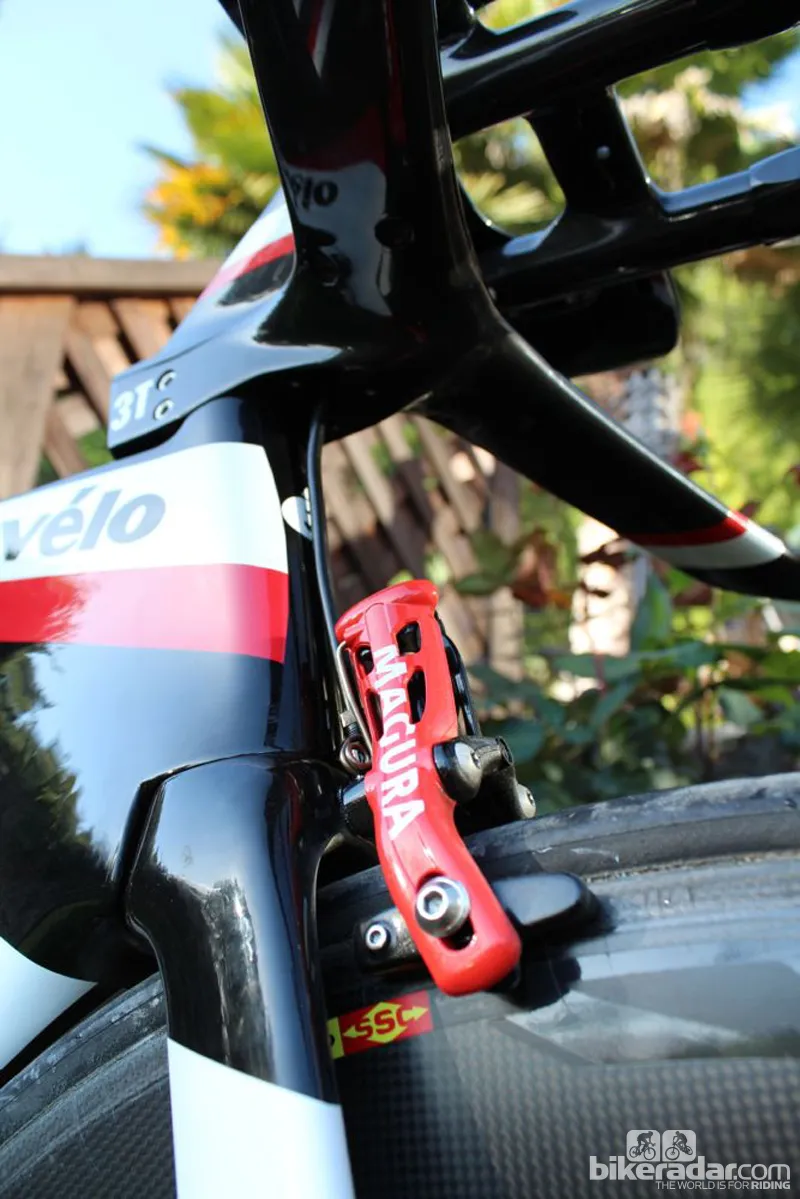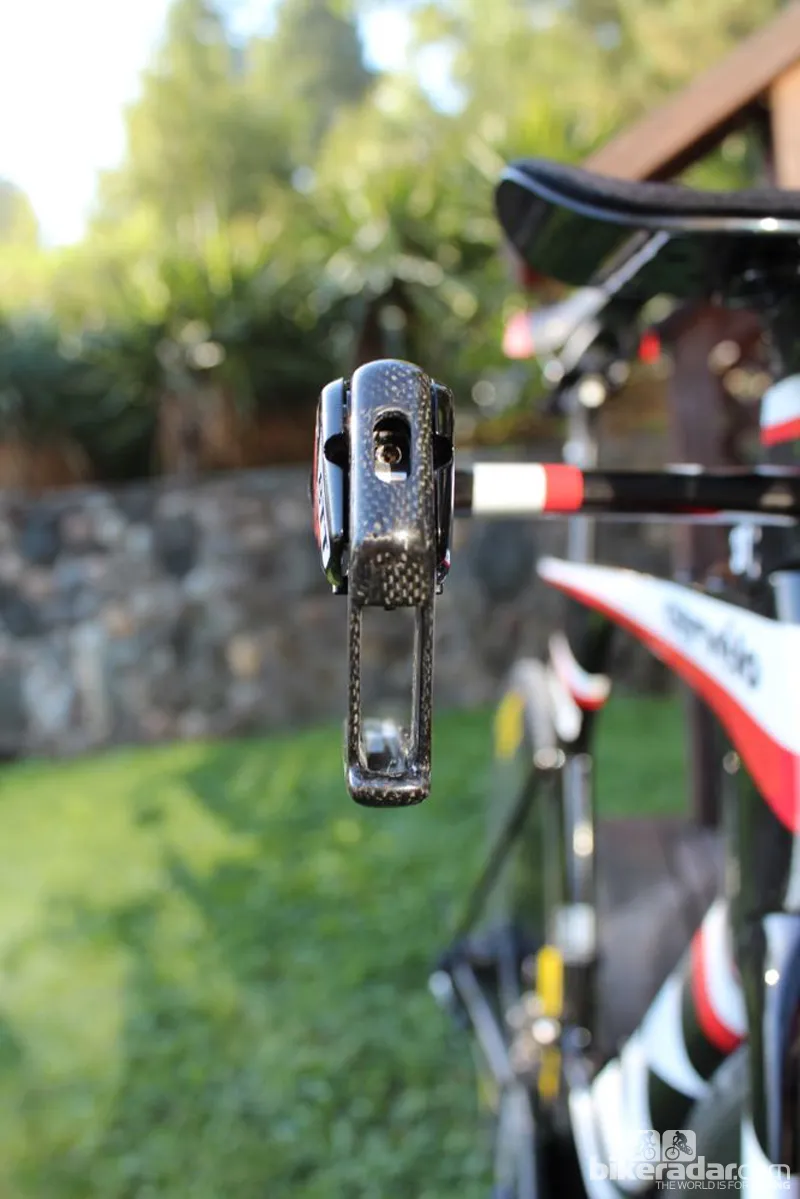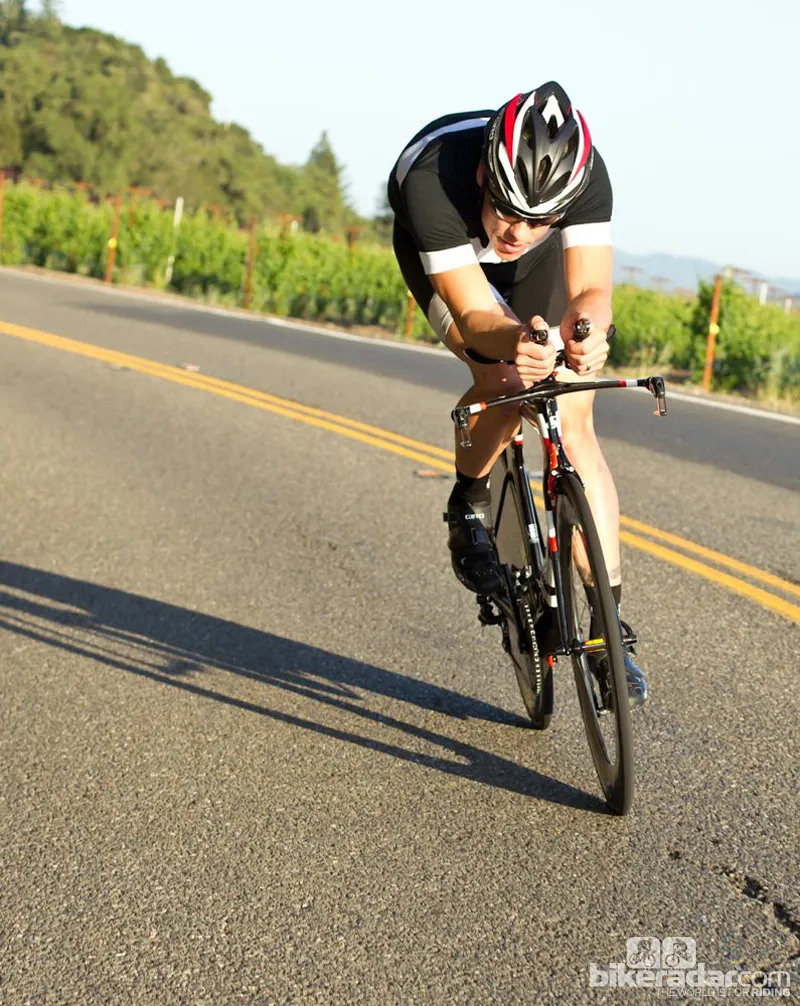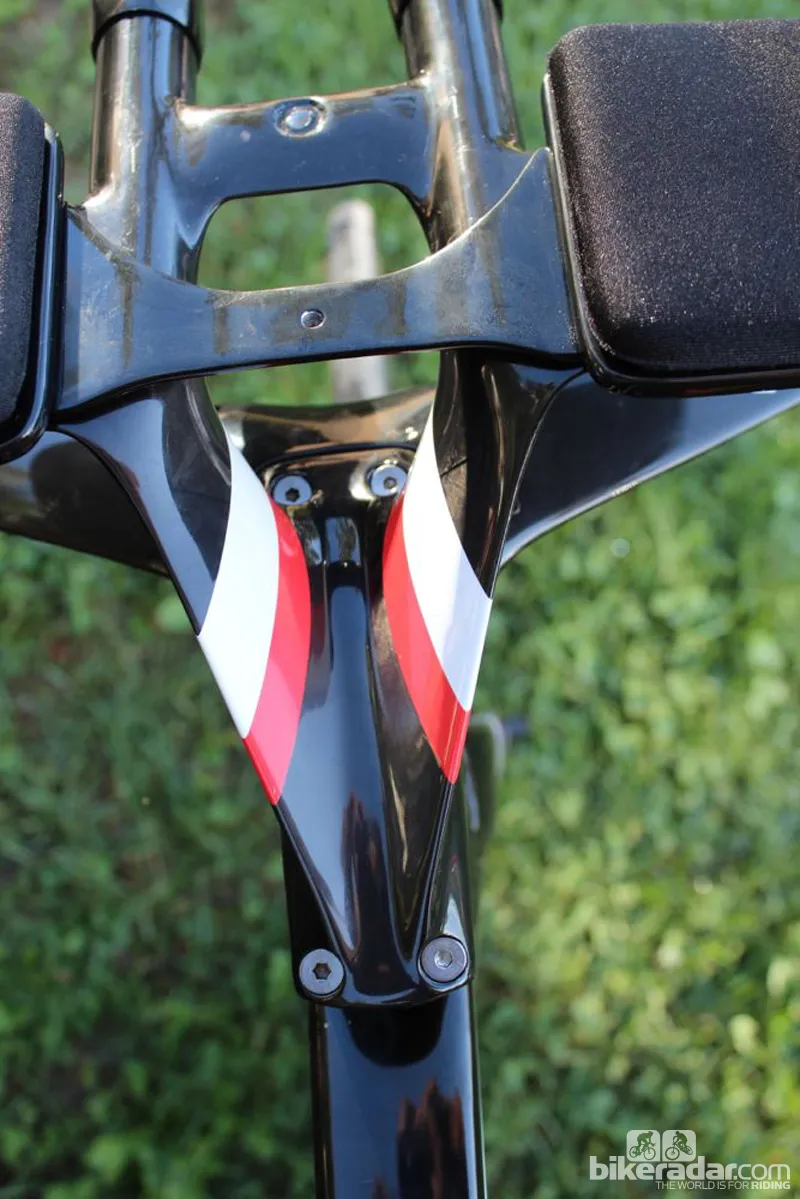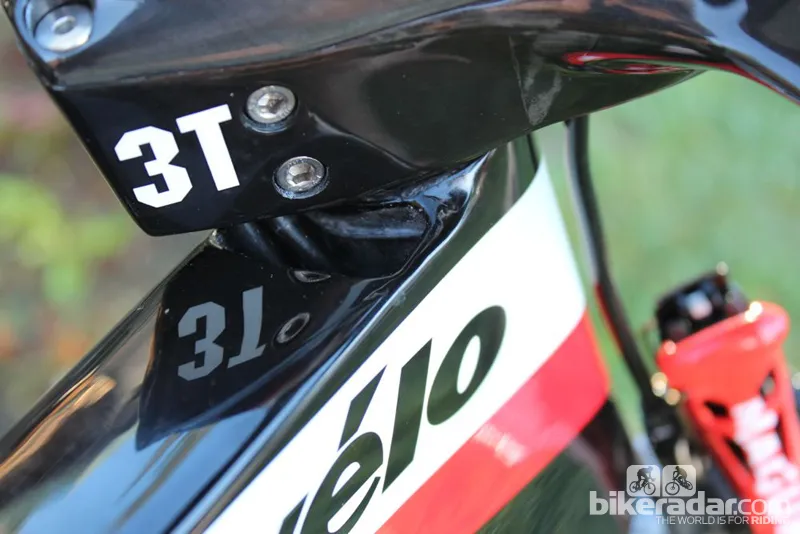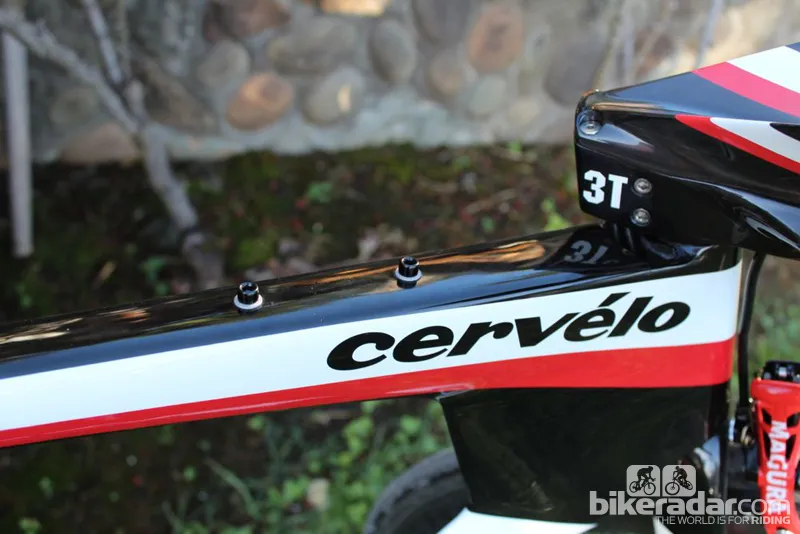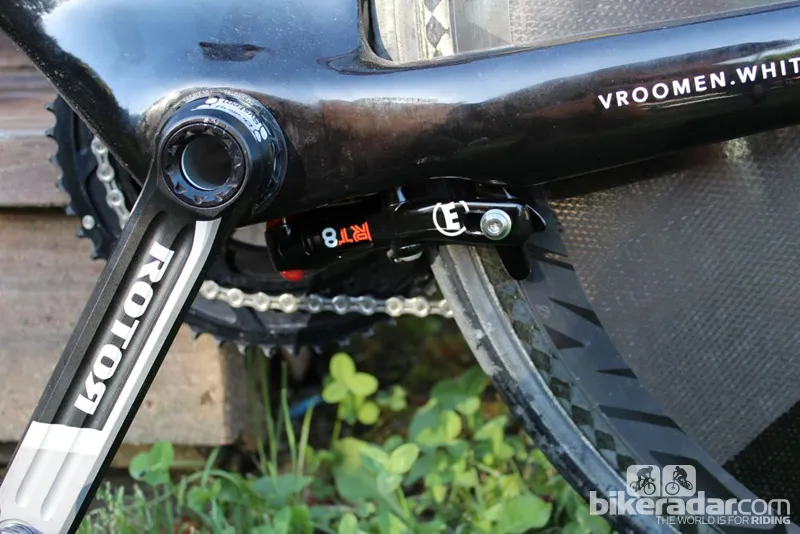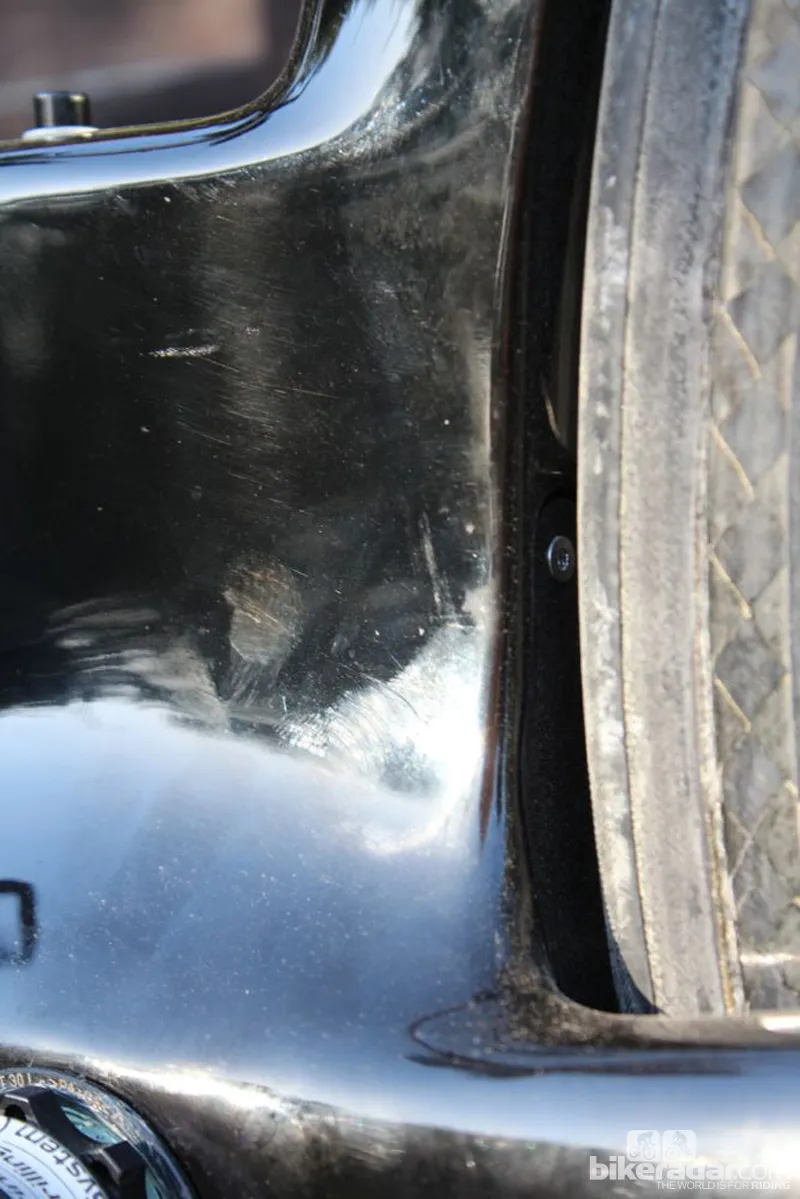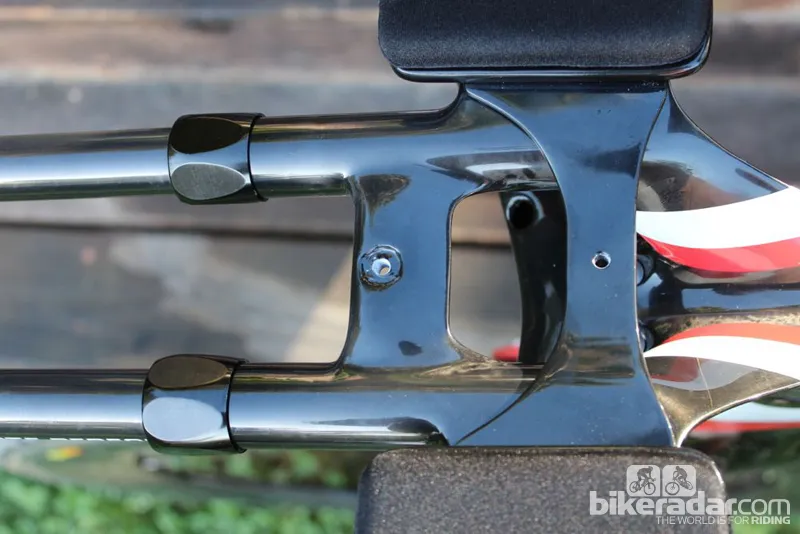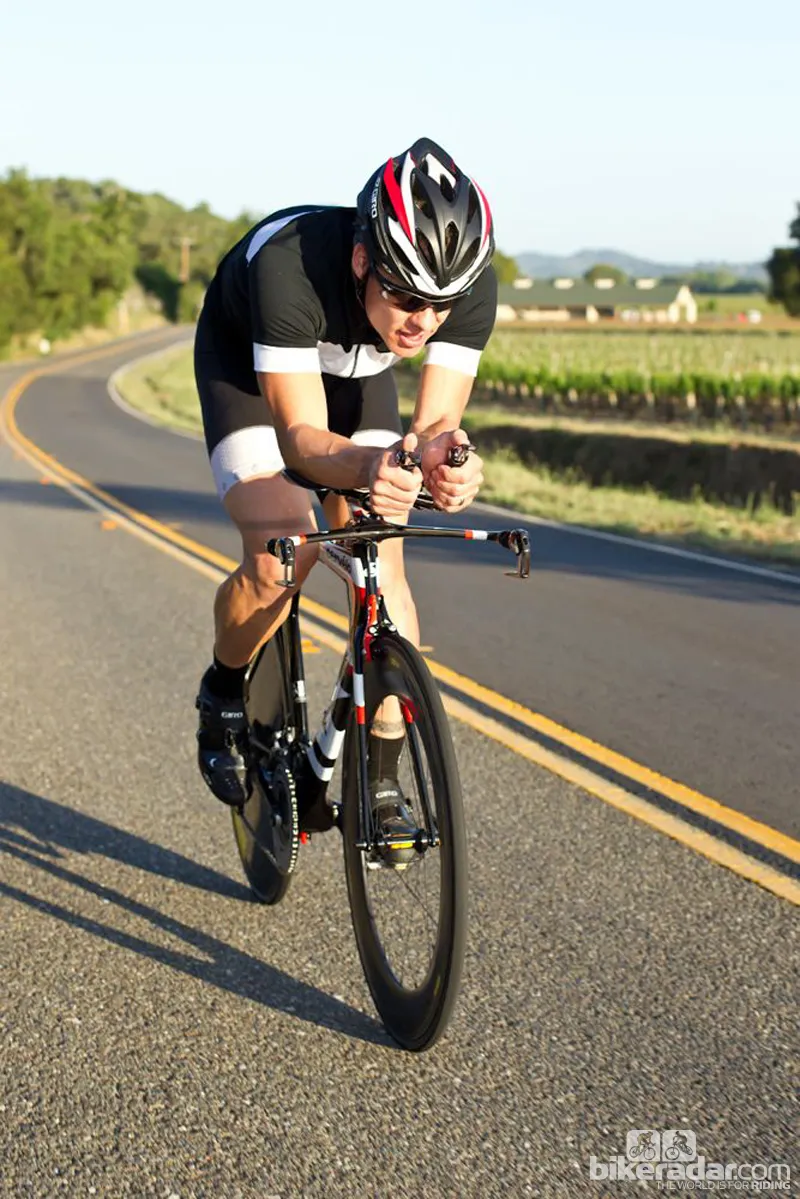The Cervélo P5 time trial bike has enjoyed success at this year's Giro d’Italia and Amgen Tour of California, under Garmin-Barracuda. And with the bike still in limited supply – only a dozen exist and only a few Garmin riders used it at the Giro; the others rode P4s – we were grateful to get a chance to test ride the UCI legal version of it in California.
There are five key elements to the P5: aerodynamics, ride feel, hydraulic brakes, fully integrated Shimano electronic Di2 design and fit adjustability. While we didn't test the bike's aero capabilities, Cervélo engineers know their way around a wind tunnel, so we’ll take them at their word that this is a fast bike. We can comment on the other four elements.
Ride & handling: Stiff and efficient
The high stiffness of the rear end and bottom bracket area of the P5 are immediately obvious when you're up and out of the saddle. It’s not a sprinting bike but it is a TT bike. That means efficiency and power transfer is everything, so the stiffness is welcome.
We big-ringed the P5 over rolling vineyard roads and even took it up some climbs that kicked to 28 percent – most certainly not in the big ring! The bike’s pedaling efficiency shone throughout.
It was harder to gauge the stiffness of the front end because there was some flex in the handlebars when we were riding on the cowhorns, pulling up for a sprint acceleration or cornering hard over rough pavement. But in the aero position – where you’re supposed to be on this bike – handling was perfectly confident, even with gusts of wind.
The bike’s substantial side profile makes sidewinds noticeable, but you feel a steady pressure, not sketchy gusts with rapid changes in pressure.
It should be noted that sidewind feel is largely affected by wheel choice. We test rode the bike with Mavic’s CC80 front wheel and Comete disc. The bike comes with 'training' wheels – a Vision Team30 set. That's because Cervélo assumes the typical customer will have their own aero hoops. The Mavic wheels felt great – fast and stable.
Unable to load media
Video: Cervelo P5 - first look
Frame & equipment: Innovative braking and fitting can be complemented with Di2
We first test rode the Magura brake calipers at Sea Otter, using the company's mechanical-to-hydraulic converter. This was our first experience with the RT8 TT hydraulic levers. Will they change your life? Nope. But for anyone who's ever ridden a time trial bike with lousy, weak brakes there's a substantial difference. Braking is strong and controlled.
The Magura brakes don’t so much advance the stopping equation as eliminate a previous problem with many TT bikes – now, the brakes stop you securely. Nothing more, nothing less.
The calipers are adjusted at the lever with an Allen key. The levers also double as quick-releases. Flip them forward and the calipers pop open for wheel removal.

We rode the Cervélo P5 with Mavic's Comete disc and CC80 front wheel (the Garmin-Barracuda spec)
Cervélo’s design sets the aesthetic standard for a high-end bike with Shimano Di2 – the battery is invisible. It’s surprising how many $10,000 bikes have bolts (even zip ties) securing the battery like an afterthought. Tucking the Di2 battery into a hidden port in the down tube might not improve performance – though small aerodynamic arguments could be made – but it definitely improves the look substantially.
Speaking of Di2, the P5 comes as either a $4,500 (£3,499.99) frameset or with one of two builds: mechanical Shimano Dura-Ace ($6,000) or electric Shimano Dura-Ace Di2 ($10,000). It feels incongruous to have relatively old school bar-end shifters on a bike this high tech.
Of course, the fastest bike in the world won’t do you a bit of good if it doesn’t fit you. At the saddle, the seatpost doubles the fore/aft adjustability of a standard saddle’s rails, making an extremely forward position possible.
The 3T Aduro aerobar comes in three heights – X-Lo, Lo and High-V. We test rode the High-V. The X-Lo has also had more reach built into it, after feedback from sponsored riders. From there, 5mm spacers can be used to fine-tune the height.
Fore/aft adjustment of the extensions is easy and pad width can also be set in a number of places. Fore/aft of the basebar, however, is what it is.
Triathletes looking at this bike should be aware that there's a triathlon frameset that retails for $6,500 (£4,499.99). It features the same frame but a more aero fork that also serves as a fairing over the front caliper. Cervélo have been working with TorHans, XLab and Dark Speed Works for custom nutrition boxes that bolt on to the P5’s top tube as well.



